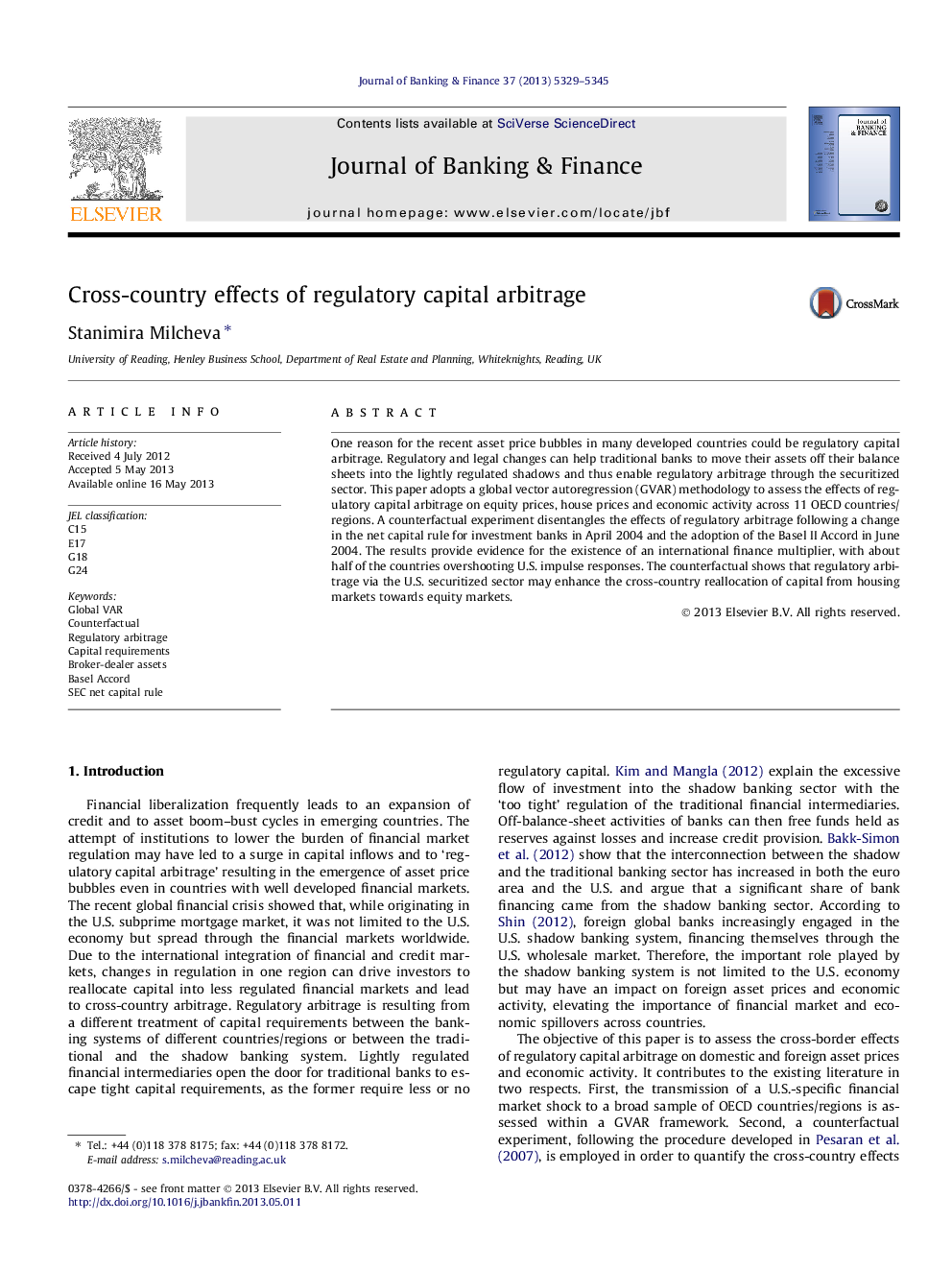| Article ID | Journal | Published Year | Pages | File Type |
|---|---|---|---|---|
| 5089366 | Journal of Banking & Finance | 2013 | 17 Pages |
Abstract
One reason for the recent asset price bubbles in many developed countries could be regulatory capital arbitrage. Regulatory and legal changes can help traditional banks to move their assets off their balance sheets into the lightly regulated shadows and thus enable regulatory arbitrage through the securitized sector. This paper adopts a global vector autoregression (GVAR) methodology to assess the effects of regulatory capital arbitrage on equity prices, house prices and economic activity across 11 OECD countries/regions. A counterfactual experiment disentangles the effects of regulatory arbitrage following a change in the net capital rule for investment banks in April 2004 and the adoption of the Basel II Accord in June 2004. The results provide evidence for the existence of an international finance multiplier, with about half of the countries overshooting U.S. impulse responses. The counterfactual shows that regulatory arbitrage via the U.S. securitized sector may enhance the cross-country reallocation of capital from housing markets towards equity markets.
Related Topics
Social Sciences and Humanities
Economics, Econometrics and Finance
Economics and Econometrics
Authors
Stanimira Milcheva,
